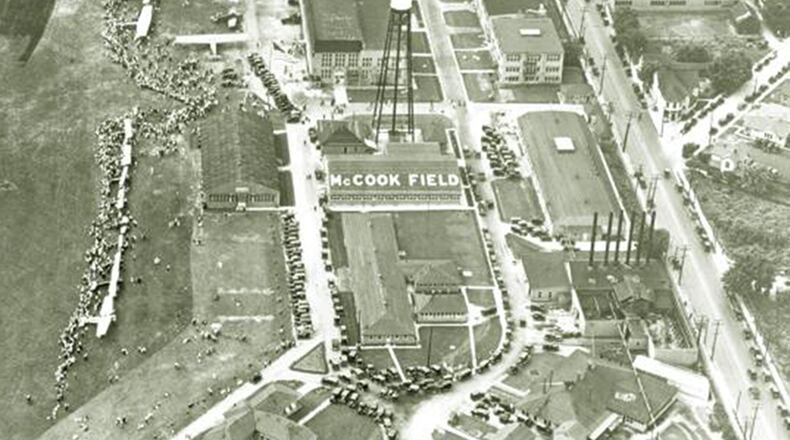The celebration will commemorate McCook Field, which was established at the outbreak of World War I on Oct. 18, 1917. Operated by the Aviation Section of the U.S. Signal Corps and its successor the United States Army Air Service, McCook Field was named after Civil War Gen. Alexander McDowell McCook, who once owned a portion of the land.
The location of McCook Field in Dayton was chosen for its centralized location and industrial complex in the local area. Consisting of the flying field and 69 buildings, the site’s purpose was to explore the potential of aircraft in the military and to seek improvements in aeronautical technology through research and development. This made McCook Field the United States’ first military aviation research facility.
During the next 10 years of operations at McCook Field, several innovations in early aviation occurred at the field, including protective clothing, closed cockpits, heated and pressurized cabins, oxygen systems, electric ignition systems, anti-knock fuel, the 700-hp, 18 cylinder “W” engine, an air-cooled power plant enhanced with a supercharger, improved navigational aids such as the earth-conductor compass and radios, improved weather forecasting techniques, stronger propellers, advancements in aerial photography, and the design of landing and wing lights for night flying.
One of most successful events was the first Army test jump with a free-fall parachute on April 28, 1919, by Leslie Irvin. Although Irvin broke his ankle on landing, the jump was considered a success with the parachute performing as designed. Irvin shortly thereafter became inspired enough to start his own parachute business in Buffalo, New York.
Known for its main hangar that read “This Field Is Small – Use it All,” the 200-acre field was expanded to 254 acres by 1919. Even with the expansion, space was at a premium.
McCook Field ultimately became too small for its purpose. Land locked by the river and approaching neighborhood, the field closed in 1927 and operations moved to Wright Field, which comprised 4,520 acres and included the Wright brothers’ flying field on Huffman Prairie. The new location was purchased from the government by citizens of Dayton, spearheaded by the Dayton Air Service Commission, which included members from the Patterson and Kettering families, who raised $400,673 to keep aviation testing in the Dayton area.
The demolition of McCook Field began on April 1, 1927; and by 1928, the field was cleared of all buildings and faded into history. McCook Field is no more, but the aviation legacy it left behind endures. For that, the site has been christened “The Cradle of Aviation.”
About the Author
